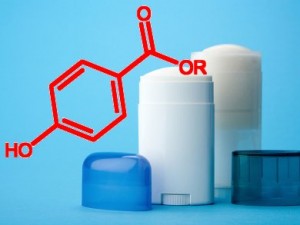Parabens found in tissue samples from 40 women with breast cancer
 A chemical widely used as a preservative in cosmetics, food products and pharmaceuticals has been found in tissue samples from 40 women with breast cancer.
A chemical widely used as a preservative in cosmetics, food products and pharmaceuticals has been found in tissue samples from 40 women with breast cancer.
A number of studies since 1998 have raised concerns about the potential role of these parabens in breast cancer as they possess oestrogenic properties.
Oestrogen is known to play a central role in the development, growth and progression of breast cancer.
Parabens are a chemical compound found in everyday toiletry products including moisturisers, make-up, shaving foam, tanning lotions and toothpaste.
They are also found in numerous brands of underarm deodorant. However, a causal link has never been found between them and breast cancer.
They are present in processed meats such as sausages, pies and pastries along with other savoury snacks.
HOW TO SPOT PARABENS
Parabens are a chemical compound of para-hydroxybenzoic acid. They are most widely used in cosmetics to extend their shelf-life by protecting them from microbial growth.
The most common parabens used in cosmetic products are methylparaben, propylparaben, and butylparaben.
Less common types include benzylparaben and sobutylparaben.
These ingredients must be printed on the label.
Parabens are also used in drugs and as food additives.
They occur naturally in some foods like blueberries.
Parabens have been found to have an oestrogen-mimicking effect – however this is at a far lower level than the amount of oestrogen produced naturally in the body.
The research team led by Dr Philippa Darbre from the University of Reading studied tissue samples from 40 women undergoing mastectomies between 2005 and 2008 for first primary breast cancer in England.
In total, 160 samples were collected, four from each woman. They found 99 per cent of the tissue samples contained at least one paraben and 60 per cent of the samples had five.
The team found women who didn’t use underarm deodorants still had measurable parabens in their tissue, suggesting they must enter the breast from other sources.
Co-author Mr Lester Barr from the University Hospital of South Manchester, said: ‘Our study appears to confirm the view that there is no simple cause and effect relationship between parabens in underarm products and breast cancer.
‘The intriguing discovery that parabens are present even in women who have never used underarm products raises the question: where have these chemicals come from?
Addition Research
99% of Breast Cancer Tissue Contained This Everyday Chemical



